■Overview of project
SHINKOSHUPPANSHA KEIRINKAN Co., Ltd. is engaged in an EDU-Port Japan supported project to support mathematics education in the Philippines. The low level of mathematical proficiency in the Philippines is a major issue, with the Philippines ranked 77th out of 78 countries for mathematical literacy in the 2018 OECD Programme for International Student Assessment (PISA) survey. Raising the level of mathematical proficiency is a very important element for the development and industrial advancement of the country and to foster industrial workforce.
SHINKOSHUPPANSHA KEIRINKAN has a wide range of contents in mathematics education such as textbooks, teachers’ manuals and teaching materials developed over 75 years in collaboration with many teachers in Japan. We aim to provide this excellent learning contents as localized video and ICT teaching materials.
■Challenges in mathematics education in the Philippines
The only teaching materials in public schools in the Philippines are textbooks which are loaned free to the children. They are printed in monochrome on not very good quality paper. In contrast, some private schools use multicolored textbooks published by private companies. Both types of textbooks contain mistakes not seen in Japanese textbooks, such as describing an isosceles triangle as an equilateral triangle. As for printing technique, there are often signs of plate slipping.
Issues related to contents include little description of how to think mathematically and inclusion of many problems that can be solved by memorization, such as calculations using memorized formulae or questions asking the names of shapes. The connection with everyday life is frequently raised, but the given numeric values are sometimes hard to calculate, and the calculations take a long time, so it can slow down progress of the lesson. In contrast, in Japan, the emphasis is placed on thinking mathematically, and the given numeric values are easy to calculate so that the importance is given to learning to form basic concepts.
The math problems in the National Achievement Test, an academic ability diagnosis test conducted at the end of high school in the Philippines, take the form of multiple-choice questions (4 choices). In the case of solving mathematical problems, this leads to jumping to conclusions and simply choosing an answer, which we think hinders the development of mathematical thinking.
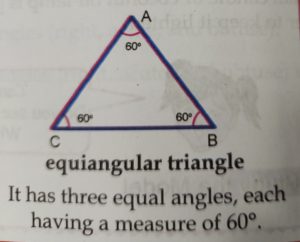
■Partnership with Department of Education of Cagayan de Oro City
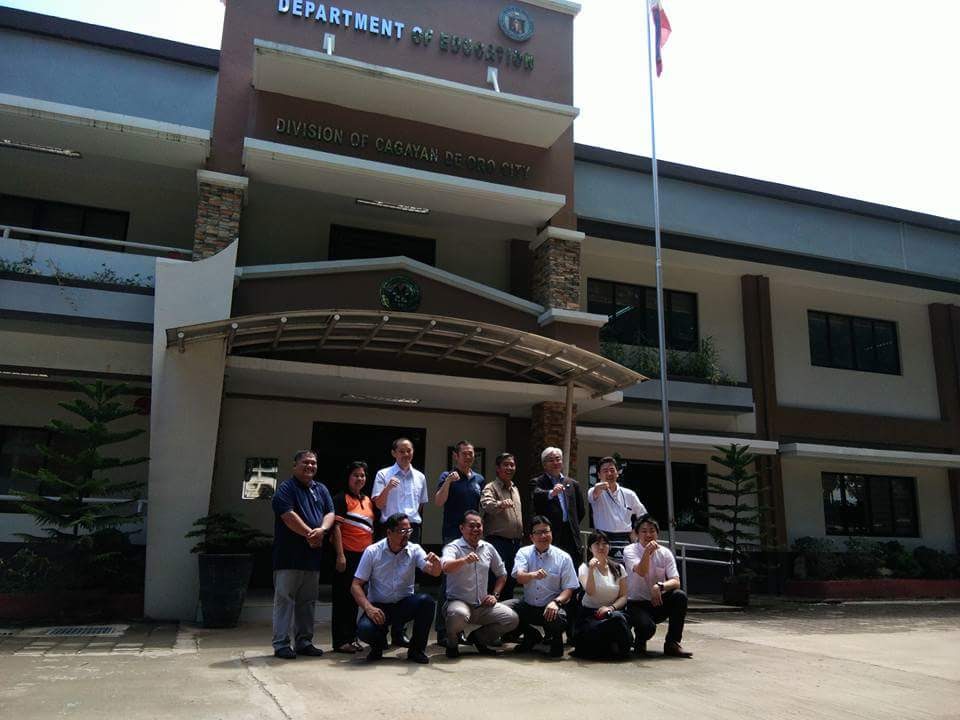
We are working on a pilot project in collaboration with the Department of Education of Cagayan de Oro City on the island of Mindanao, where its developing is a challenge for the Philippines. With strong influence over the surrounding area, Cagayan de Oro, a major urban city, has a strong interest in education. Since our first visit in 2015, we have continued to build a strong collaborative relationship with Cagayan de Oro City as our counterpart.
■ Localization of “Smart Lecture” hybrid paper-digital teaching materials
SHINKOSHUPPANSHA KEIRINKAN’s “Smart Lecture” video materials provide hand-drawn and voice-over explanations of textbooks and paper-based teaching materials. “Smart Lecture” has been used by many schools and education boards in Japan during the COVID-19 pandemic. In the Philippines, we proposed using “Smart Lecture” videos to explain paper-based text to help the teachers more easily understand the Japanese-style explanations and teaching methods. Tagalog and English are the official languages of the Philippines. Mathematics and science are taught in English, but not all the students are proficient in English. As the language barrier makes understanding more difficult, we also provided the content in Visayan, the local language.
■Pilot project
The pilot project involved grade 10 students (first grade of high schools in Japan) from one public school and one private school in Cagayan de Oro city. Group A, using “Smart Lecture”, and Group B, using local teaching materials, attended a 20-minute supplementary lesson after school to verify the learning effect.
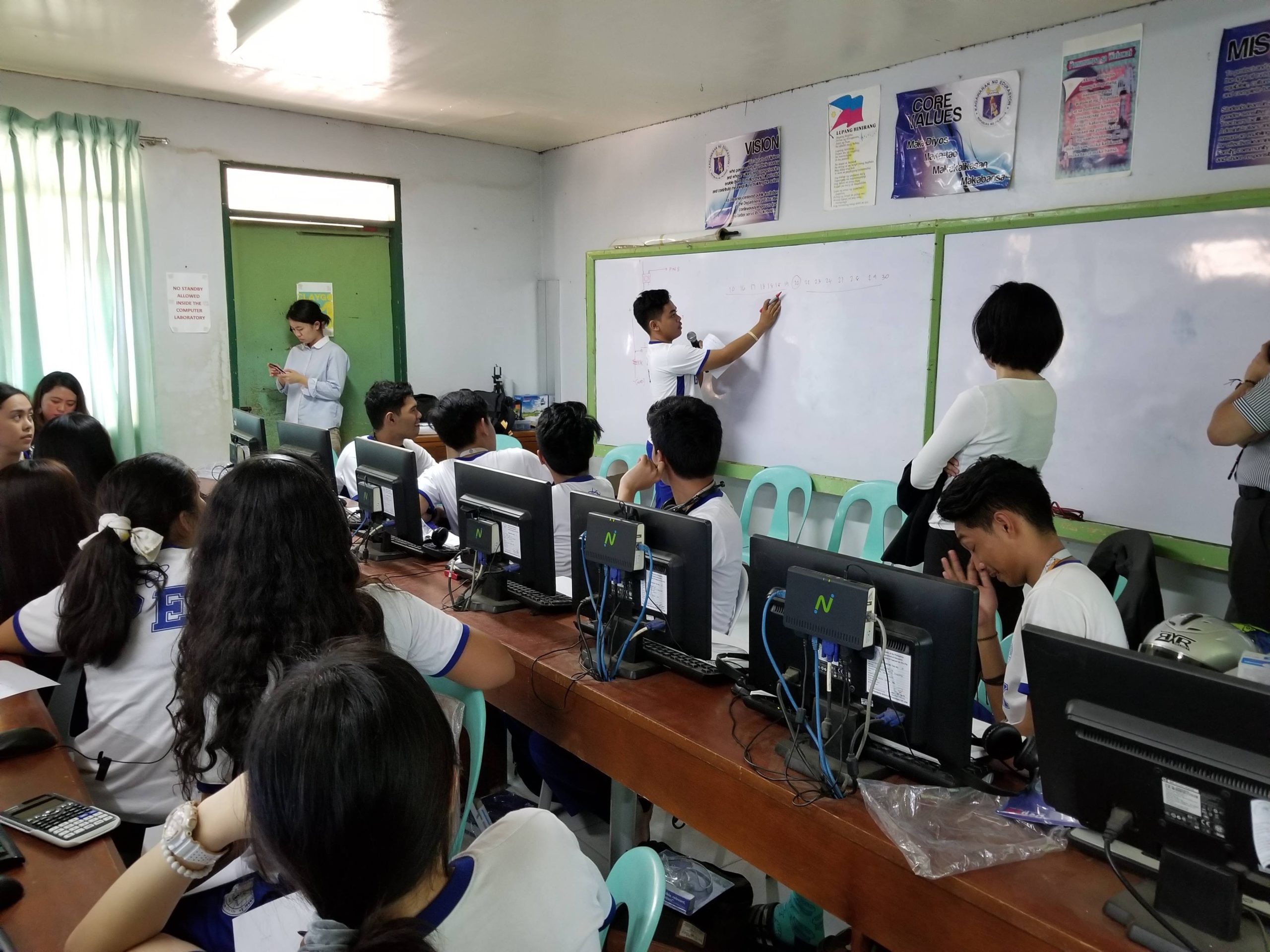 |
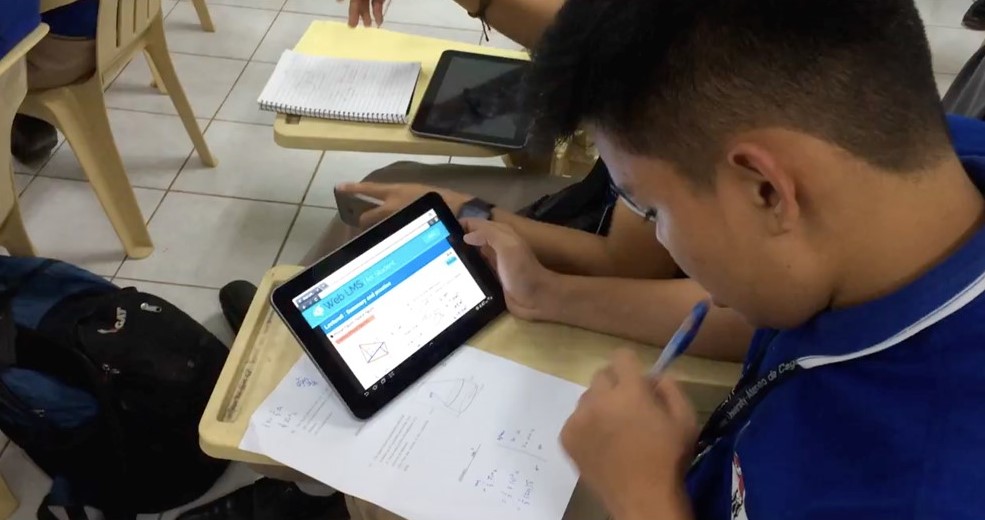 |
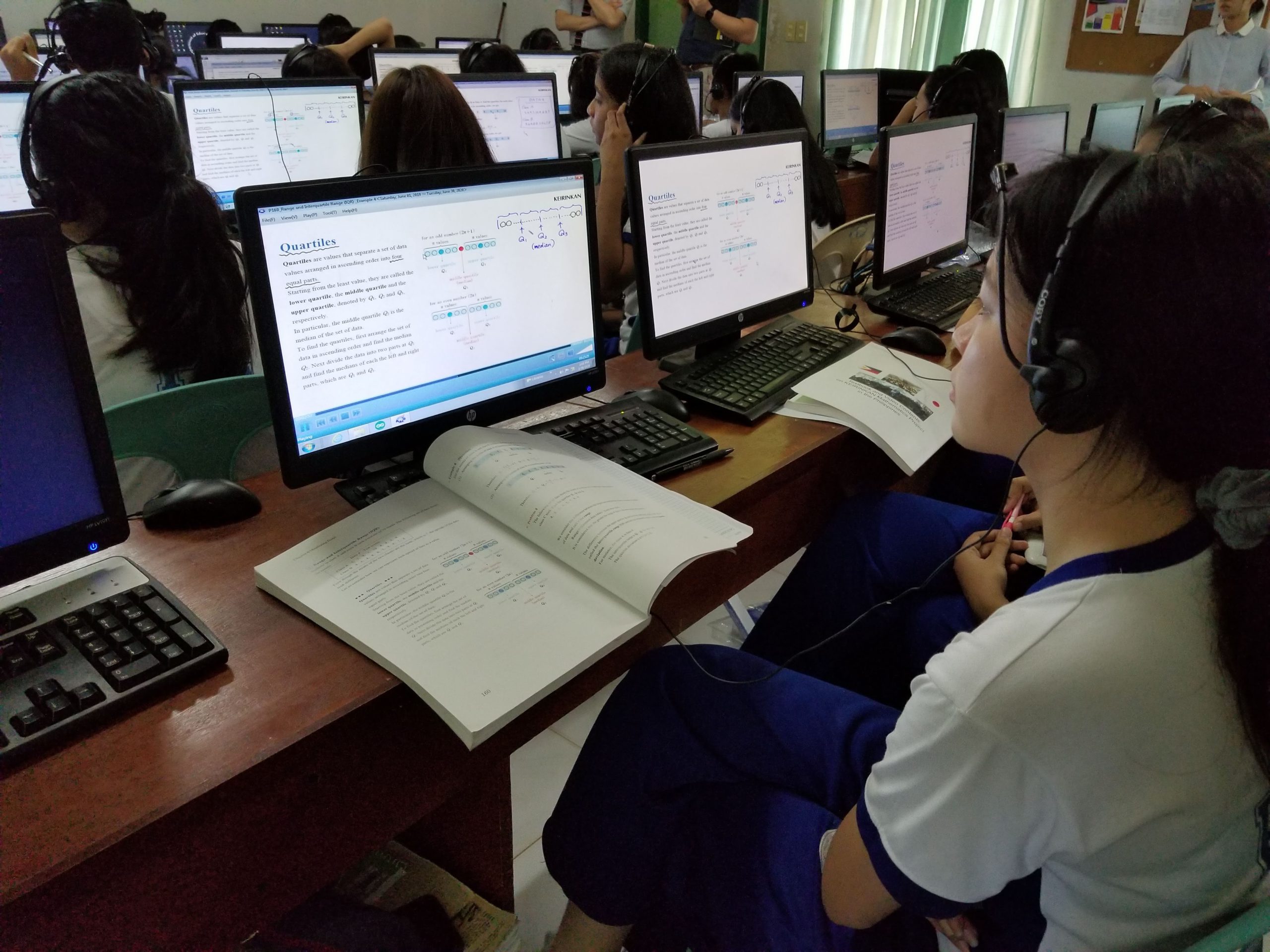 |
|---|
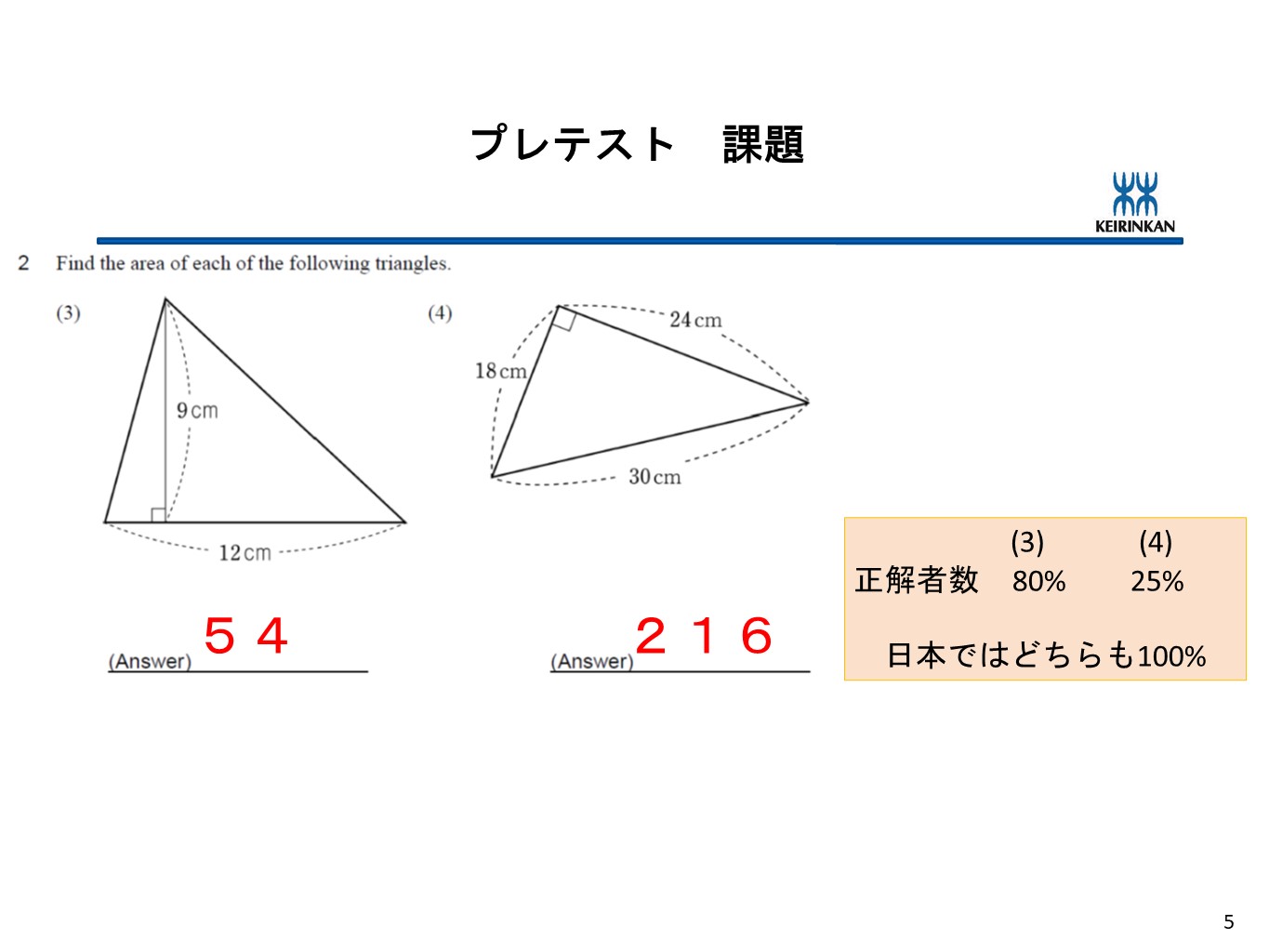 |
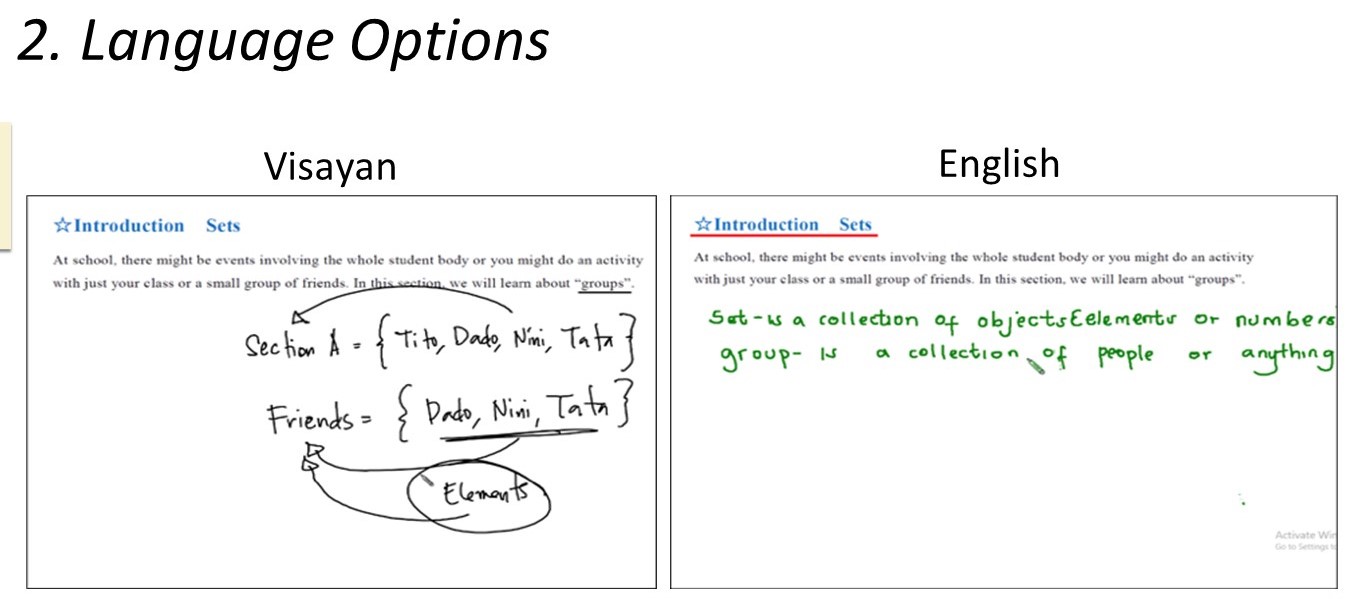 |
|---|---|
| Grade10Percentage of correct answers to grade 10 base line test question | Studying using “Smart Lecture” with explanatory video in Visayan and English |
The results of the test confirmed the learning effect in the group using “Smart Lecture”. Moreover, it is also noteworthy that the students described the process of solving the problems in the answer sheet. A test conducted a month later confirmed the successful retention of learned information.
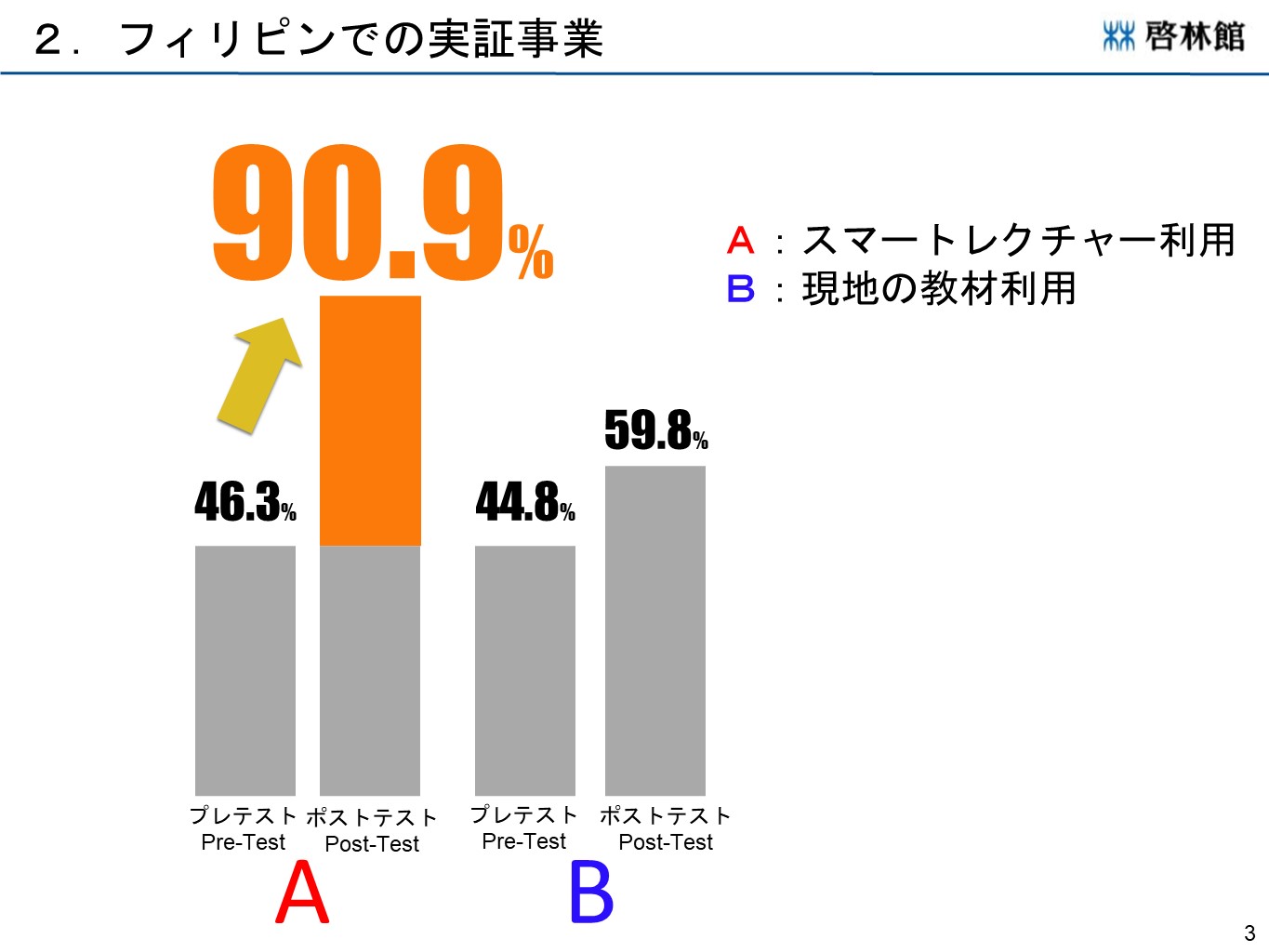 |
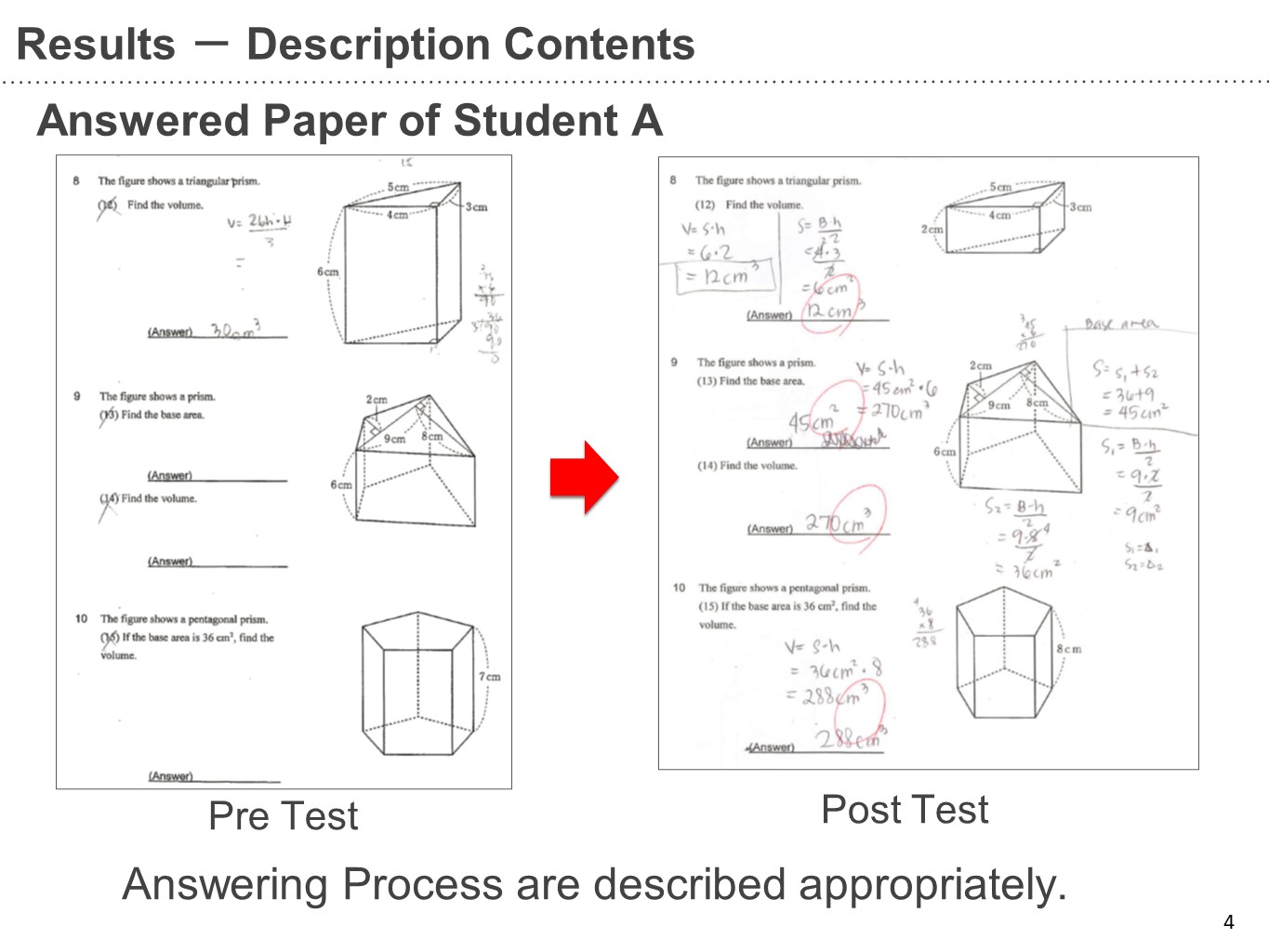 |
|---|---|
| Fig.1 Learning effect of “Smart Lecture” was confirmed | Fig.2 The process of solving the problems was also described |
■Results-sharing conference
A conference to share the results of the pilot project was attended by the mayor of Cagayan de Oro city and the director of the Department of Education as well as over 100 school officials. The mayor shared his expectations of the project and of Japan’s mathematics education, recognizing how important education is for Philippine education and the development of Cagayan de Oro city. The director of the Department of Education spoke highly of the project’s achievements and expressed his wishes to cooperate in further expanding Japanese-style education from the pilot school to other schools. The teachers at the pilot school presented the examples and the results of the use of “Smart Lecture” at school and showed a video of the students giving their impressions.
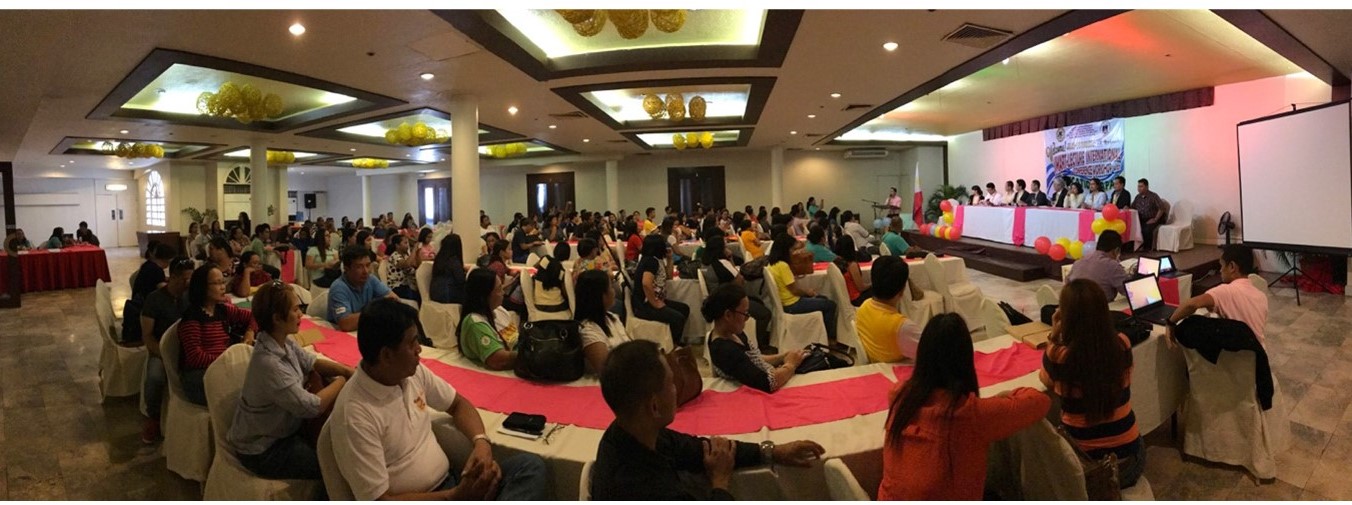
■Future plans
Having undertaken this demonstration project, going forward, we are looking into expanding to the business with local partner companies while promoting the adoption as an EDU-Port Japan Supported Project and the advantages of Japanese-style mathematics. With a budget for EdTech prioritized by the Philippine government during the COVID-19 pandemic and the use of smartphones as a common learning tool at schools, we are also planning activities aimed at spreading app-enabled products. We also aim to leverage this evidence and experience in education in Japan, strengthen interaction with the Philippines and roll out various projects.







